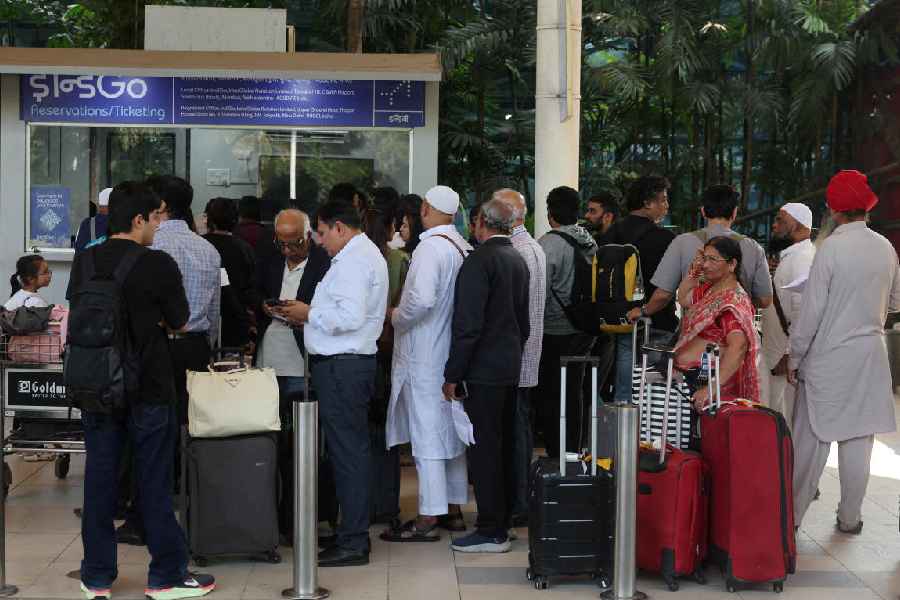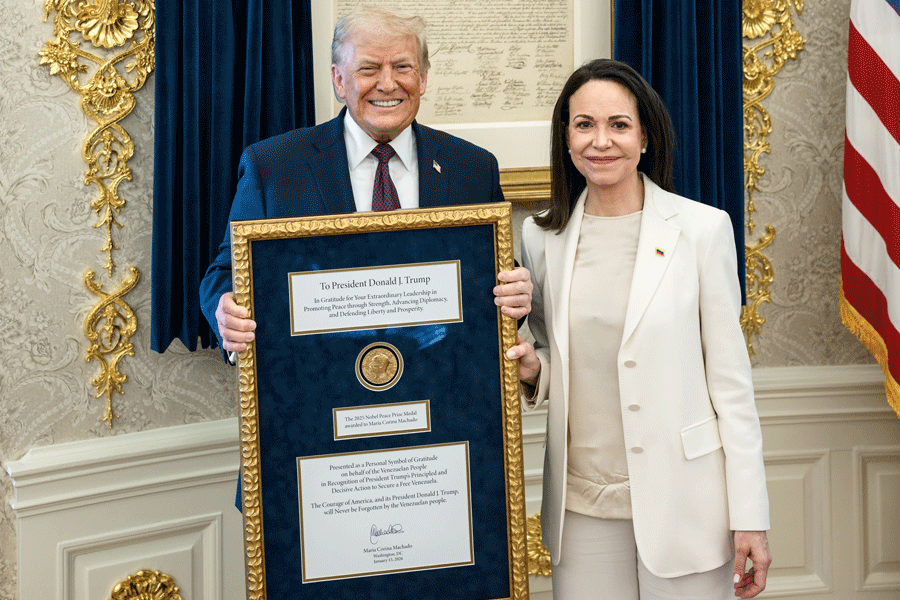Burdwan’s own sitabhog and mihidana and Shaktigarh’s langcha are set to go global.
 |
Mihidana and Sitabhog The first time What goes in Made from Kaminibhog, gobindabhog or basmati rice. The rice is mixed with besan and saffron and blended. The mix is poured into hot ghee through a brass ladle with holes. The deep-fried saffron grains are then dunked in sugar syrup Cottage cheese or chhana and powdered rice are rolled into a dough. It is broken into tiny bits and fried in ghee, then soaked in sugar syrup |
The district administration has finally taken notice of the business potential of these famous Burdwan treasures, each with an interesting colonial history. Recently the administration held a meeting with the manufacturers of the three mishtis, and it was decided that the makers would be trained in packaging and marketing to take their products elsewhere in the country and abroad.
The meeting held on December 10 at the Burdwan Development Authority Auditorium was attended by District Industry Centre general manager Deepankar Chakraborty and assistant director of the West Bengal Institute of Packaging, N. Nataraj. Workshops to train manufacturers will be held on January 6 and 7.
Sitabhog, mihidana and langchas can remain packaged only for 10 days, beyond that they go bad.
With state-of-the-art packaging, the sweets will stay fresh for six months and there will be no difference in the quality either. In that case, they can be exported easily.
This was an attempt to develop the sitabhog, mihidana and langcha industry, district magistrate Soumitra Mohan said. The initiative takes cue from chief minister Mamata Banerjee, who had the sweets on her mind for some time.
After becoming the chief minister, she had tried to develop the sweets into a full-fledged industry. Many times on a visit to the district she would lament the decline in the standard of these mishtis. She had directed the district administration to bring it into the purview of industry.
 |
langcha The first time The langcha’s origin goes back 90 years, when the queen of Burdwan wanted to eat a sweet that was different, historian Sarkar says. A mishti-maker from Shaktigarh prepared a sweet made of What goes in Cottage cheese and chikoo pulp are mixed, cardamoms are added for scent and flavour. Sometimes a nakuldana (a hard sugar candy) is stuffed in the yet-to-be-fired langcha. The longish dough is deep-fried in ghee, and the heat melts the nakuldana into syrup inside. The fired sweet is then put in sugar syrup |
The administration surveyed Burdwan town and Shaktigarh to make a list of the sweet manufacturers. It has been estimated that the daily turnover of the business of sitabhog and mihidana, two delicate sweets that imitate grains and are available mostly in Burdwan town, is Rs 25 lakh to 30 lakh.
About 50 manufacturers are involved in the sitabhog and mihidana business.
Mihidana is made from powdered kaminibhog, gobindabhog and basmati rice, mixed with a small amount of besan and saffron for a golden colour. They are blended very well with water by hand till it turns light and the mix is poured through a brass ladle with tiny holes into a pot of ghee and deep-fried. The fine fried small rice-like grains are dipped in sugar syrup and drained once soaked.
For sitabhog, which looks like pulao made of Basmati rice, cottage cheese is added to powdered rice. The dough is rolled in hand so that it breaks into tiny, long bits, like flat rice. These are then fried in ghee and soaked in sugar syrup.
Sitabhog and mihidana are sold between Rs 80 and Rs 150 a kg, said Prosenjit Datta, a well-known manufacturer.
The daily turnover from langchas, the elliptical fried syrup-dipped sweet sold from the Shaktigarh shops that line the two sides of NH2 and mirror each other, about 12km from Burdwan town, is Rs 10 lakh. The business has about 25 manufacturers.
District magistrate Mohan said there would also be an effort to get a patent for Shaktigarh Langchas.
The langchas are special, claim their makers, because of their melt-in-the-mouth quality. Apparently, the air and the temperature in Shaktigarh adds to the life of the langchas.
“We have seen that langchas made in Burdwan town or Calcutta go stale in seven-eight hours. But langchas made in Shaktigarh stay all right for two to three days,” says Langcha manufacturer Kaushik Ghosh, one of the younger men in the business.
“We raise the temperature of the chhana (cottage cheese) to a certain degree, mixed with powdered soda, cardamom, flour, hand-rolled into different sizes and fried in Dalda or ghee. Then they are dipped in three different sweet syrups,” says Sunil Haldar, another manufacturer.
Langhchas cost between Rs 3 and Rs 20 a piece.
At the meeting, experts advised the manufacturers to use good quality raw material. The District Industry Centre promised to provide the manufacturers with registration and fire licences.
The manufacturers wanted a few more things. “The administration has never looked at us. We want patents for all three sweets,” said Pradeep Bhakat, district secretary of Pashchim Banga Mishtanna Byabsayi Samiti (sweetmakers’ association).
“Besides, we want an acre of land from the administration, where we want to build a Mistanna Bhavan, he added.
“Manufacturers and workers can be trained there on all aspects and there would be facilities to ensure quality control of raw material as well as sweets and its packaging,” he added.











